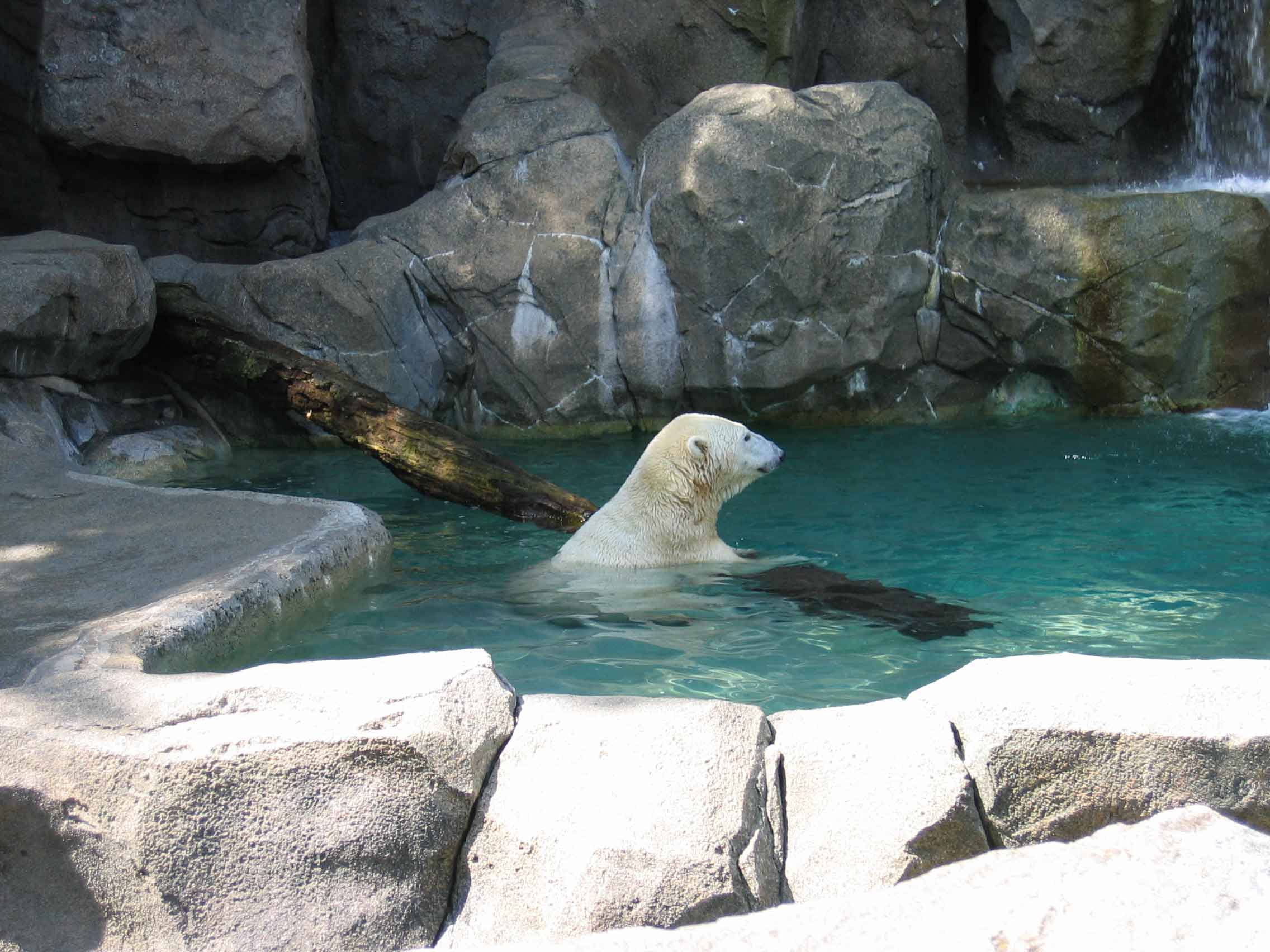Polar bear
Ursus maritimus
Ursus maritimus
Polar bears are survival specialists in an extreme environment – the
Arctic. Their large body size, layers of thick, hollow hair, and 3-4
inches of blubber provide insulation from the cold, in and out of the
water. Large, partially webbed paws and a streamlined shape help make
them champion swimmer.
Described as “sea bears,” polar bears depend completely upon the sea for their existence. They spend most of their time on the Arctic pack ice, following its seasonal expansion southward in the winter and retreating north in the summer.
Described as “sea bears,” polar bears depend completely upon the sea for their existence. They spend most of their time on the Arctic pack ice, following its seasonal expansion southward in the winter and retreating north in the summer.
Fact file:
Weight: Males 775 – 1500 lbs, Females 330 – 650 lbs
Habitat: The ice-covered Arctic, typically near open channels of water. Occasionally along island and mainland coasts.
Diet: Primarily seals
Longevity: 15-18 years (30 years in captivity)
Reproduction: Mating occurs in the spring. Females enter dens the following fall, usually giving birth to two cubs that weight approximately one pound each.
Current Range: Primarily the Arctic Ocean, including coastal portions of Canada, United States (Alaska), Russia, Denmark (Greenland) and Norway.
